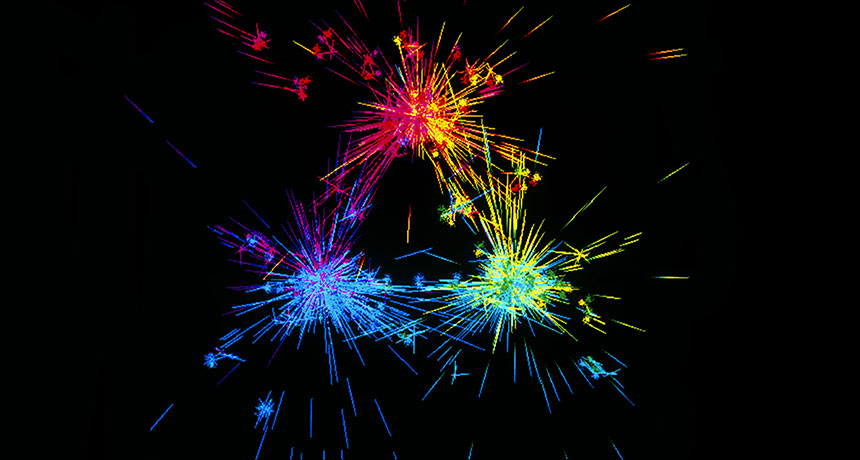The inside of a proton endures more pressure than anything else we’ve seen
For the first time, scientists used experimental data to estimate the pressure inside a proton

FEELING THE PRESSURE Extreme pressures are found within the proton, scientists report. The proton contains three particles called quarks (illustrated) as well as gluons, which hold the particle together.
ArSciMed/Science Source